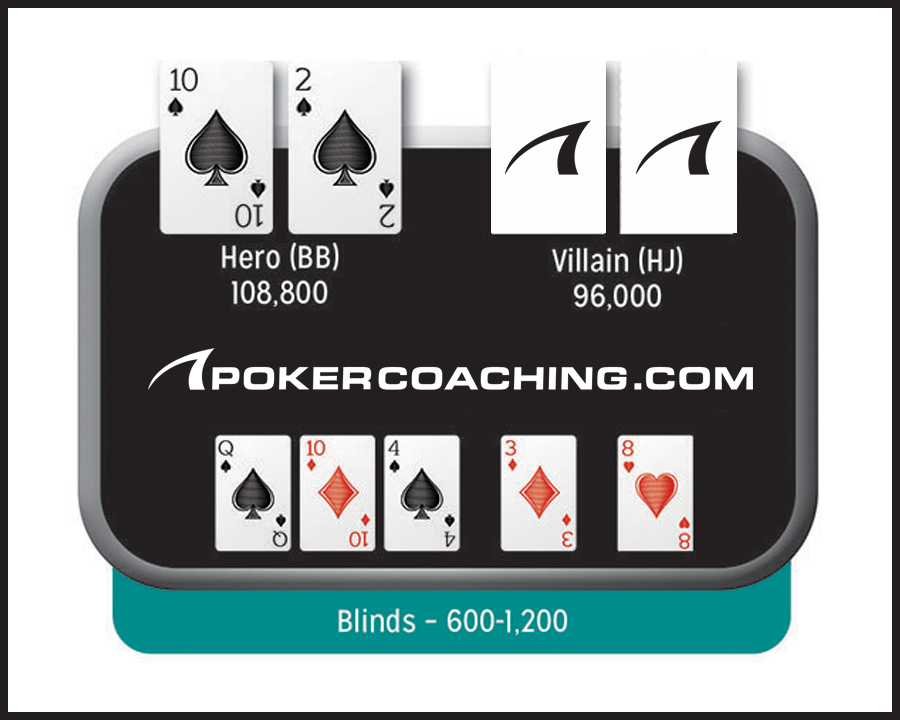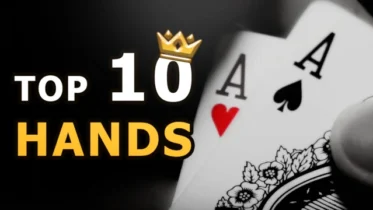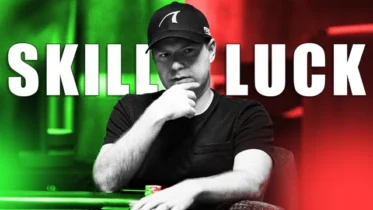Playing from the big blind can create some unique spots at the poker table, but how should you proceed out of position when you flop a pair and a flush draw? Dedicating yourself to improving at poker means preparing for every scenario, even the ones you least expect.
Scenario: You are eight-handed in a $5,000 tournament with 108,800 chips at 600-1,200. A good, young player in the hijack raises to 2,600 and it folds to you in the big blind holding 10♠-2♠.

Preflop Analysis
Many players get a little bit too splashy when they find themselves with junky hands in the big blind. Shallow stacked, you can defend against a min-raise with any suited hand, but as you get deeper stacked, you should usually fold your worse suited hands. Facing a competent opponent, playing 10-2 out of position is not ideal, so folding is the preferred action.
Action: While folding would have been preferred, you decide to call and see the flop. The flop comes Q♠-10♦–4♠. You check and your opponent bets 3,500 (47% pot).
Flop Analysis
The Pot: 5,200
The Board: Q♠-10♦-4♠
Effective Stack: 88 Big Blinds Effective
Playing The Flop With A Flush Draw And Pair
Pairs with draws are great hands to call with when the pair is marginal. Raising would fail to get any pair of queens to fold and would usually only get more money in the pot against better made hands that you have to improve to beat, or premium draws that have good equity. Calling keeps marginal hands such as pocket nines, A-K, and A-J involved, which is excellent when you have a hand like middle pair.
Action: You call and the turn card is the 3♦. You check and your opponent bets 8,500 (59% pot).
Turn Analysis
The Pot: 12,200
The Board: Q♠-10♦-4♠-3♦
Effective Stack: 85 Big Blinds Effective
Reacting To Further Aggression On The Turn
By blasting the turn, your opponent’s range consists of almost entirely good made hands and draws. While you beat most draws, you are in pretty bad shape against the made hands. Shoving all-in would be an interesting play if it could induce your opponent to fold A-Q or K-Q, but most players will make the hero call, given your shoving range could easily contain a lot of high-equity draws.
Against good players, you cannot get away with raising when they bet the flop and turn, so calling, looking to improve or somehow win at the showdown, is the ideal play.
Action: You call and the river is the 8♥. You check and your opponent bets 23,500 (75% pot).
River Analysis
The Pot: 29,900
The Board: Q♠-10♦-4♠-3♦-8♥
Effective Stack: 78 Big Blinds Effective
Making The Correct River Decision
The most likely bluffs in your opponent’s range such as A-K and A-J may not even be in their range because many of those would check behind on the turn. By continuing to bet, it is highly likely your opponent has you beat, but there may be some value in making the call. Capable opponents have the ability to triple barrel bluff when their draws don’t hit, and occasionally with junk like K-5 suited. That said, while a call can be justified, you are most often well behind, making a fold the proper move.
Conclusion: You decide to fold. While you may have had some outs, you learned the danger of calling preflop raises with hands like the one Doyle Brunson made famous.



